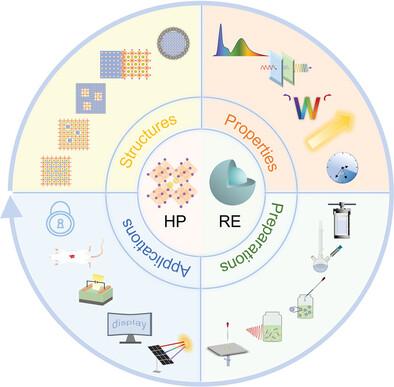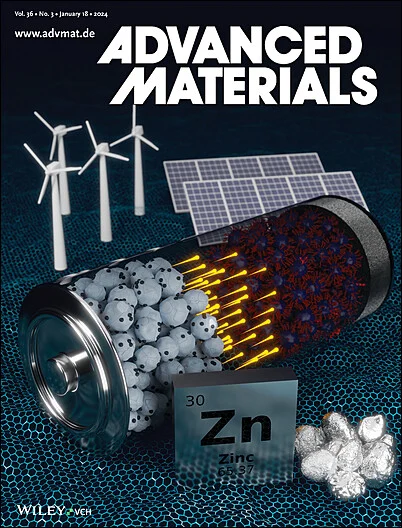Synergistic Integration of Halide Perovskite and Rare-Earth Ions toward Photonics
IF 27.4
1区 材料科学
Q1 CHEMISTRY, MULTIDISCIPLINARY
引用次数: 0
Abstract
Halide perovskites (HPs), emerging as a noteworthy class of semiconductors, hold great promise for an array of optoelectronic applications, including anti-counterfeiting, light-emitting diodes (LEDs), solar cells (SCs), and photodetectors, primarily due to their large absorption cross section, high fluorescence efficiency, tunable emission spectrum within the visible region, and high tolerance for lattice defects, as well as their adaptability for solution-based fabrication processes. Unlike luminescent HPs with band-edge emission, trivalent rare-earth (RE) ions typically emit low-energy light through intra-4f optical transitions, characterized by narrow emission spectra and long emission lifetimes. When fused, the cooperative interactions between HPs and REs endow the resulting binary composites not only with optoelectronic properties inherited from their parent materials but also introduce new attributes unattainable by either component alone. This review begins with the fundamental optoelectronic characteristics of HPs and REs, followed by a particular focus on the impact of REs on the electronic structures of HPs and the associated energy transfer processes. The advanced synthesis methods utilized to prepare HPs, RE-doped compounds, and their binary composites are overviewed. Furthermore, potential applications are summarized across diverse domains, including high-fidelity anticounterfeiting, bioimaging, LEDs, photovoltaics, photodetection, and photocatalysis, and conclude with remaining challenges and future research prospects.

求助全文
约1分钟内获得全文
求助全文
来源期刊

Advanced Materials
工程技术-材料科学:综合
CiteScore
43.00
自引率
4.10%
发文量
2182
审稿时长
2 months
期刊介绍:
Advanced Materials, one of the world's most prestigious journals and the foundation of the Advanced portfolio, is the home of choice for best-in-class materials science for more than 30 years. Following this fast-growing and interdisciplinary field, we are considering and publishing the most important discoveries on any and all materials from materials scientists, chemists, physicists, engineers as well as health and life scientists and bringing you the latest results and trends in modern materials-related research every week.
 求助内容:
求助内容: 应助结果提醒方式:
应助结果提醒方式:


